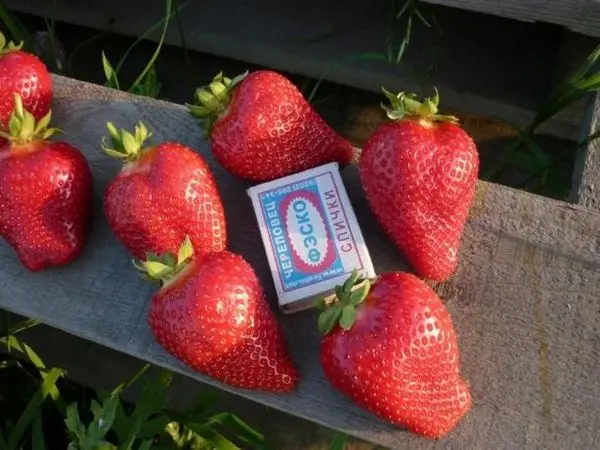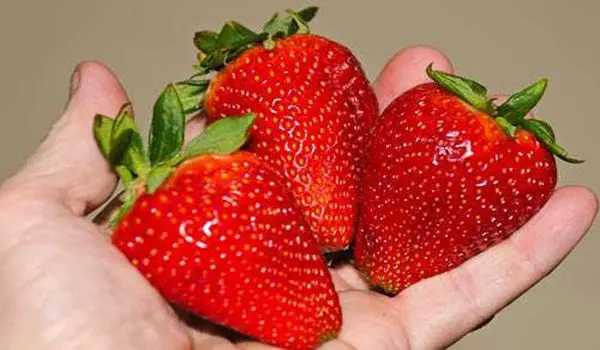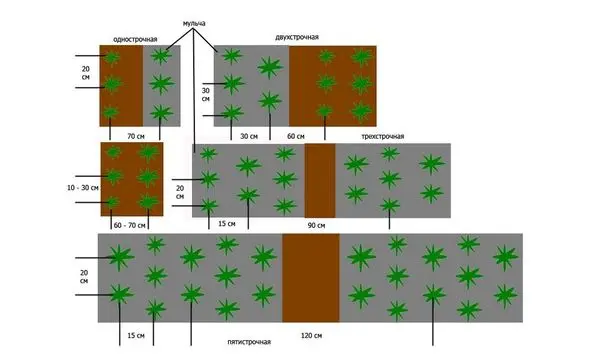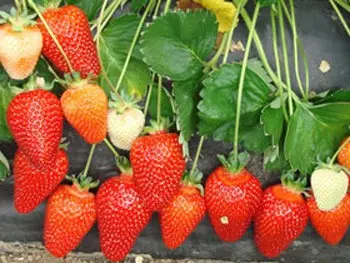Contents
Strawberry Alba is a universal early ripe variety. At the beginning of the season, it ripens one of the first, therefore it is in great demand among consumers. You can grow Alba in any conditions: greenhouses, in beds and even in pots. With proper care, it shows excellent productivity everywhere and pleases with a multifaceted taste.
Inference history

Strawberry Alba is a product of the Italian breeding company New Fruits. This company has bred many varieties of strawberries, predominantly industrial, that have gained recognition in the world market. But they all require warm climatic conditions, while Alba is designed specifically for the continental climate with sharp drops and negative temperatures.
Alba was bred with varieties Albion and Cal.97.85-6, from which she inherited the best qualities: phenomenal yield, beautiful appearance and quality of berries. Much attention was paid to the adaptive abilities of the variety, thanks to which the gardener of any country can grow it on his site. In the CIS countries, strawberries became known in 2005, and since that time it has been in great demand in private and industrial cultivation.
Video “How to care for strawberries”
In this video, an expert will tell you how to properly care for strawberries at different times of the year.
Characteristic of the variety
The main advantage of the variety is, of course, the external description of the berries. They are all large (30–50 g), one-dimensional, beautifully aligned, with bright red shiny skin. The pulp is moderately juicy, pleasant sweet and sour taste, rather dense texture. There is no pronounced strawberry aroma, but when grown in open beds under the sun, the berry grows more sugary and fragrant. In greenhouse conditions, especially in the early season, the aroma and taste are less pronounced.

Farmers in this strawberry are attracted by high transportability and excellent presentation, which is achieved due to the increased density of berries. They do not crumple and do not flow at all, which significantly prolongs the implementation. Productivity is also high – an average of 0,7-1 kg per bush. In industrial cultivation, it is possible to achieve even higher rates – up to 1,3 kg.
In the garden “Alba” can be recognized by powerful and tall (up to 35 cm) bushes. The plants produce few leaves and whiskers, probably due to the large number of inflorescences. The peduncles themselves are strong, but under the weight of the berries they lie down on the ground, so it is recommended to mulch the soil between the rows.
Strawberry flowering comes early, and the first harvest is ready for harvest in mid-May. But it’s in the open. Under cover, the berries ripen a couple of weeks earlier. Plants get sick very rarely, they also tolerate drought and rain well, but in severe frosts they can freeze.
Peculiarities of growing
There are two ways to breed Alba: seeds and ready-made seedlings. The first method is troublesome and time-consuming, because seedlings need care, picking, then transplanting into the ground and time for survival. However, it allows you to get a large number of seedlings without significant material investments. Sow seeds in winter. The substrate is needed loose and light, since the strawberry seed is very small and when sowing it is not buried, but scattered over the surface. Shoots appear quickly. At the end of March, it is already possible to dive plants, and with the advent of 4–5 leaves, transplant them to the garden.
Harvest from such bushes is obtained only the next year, so many prefer seedlings. For industrial cultivation, it is easier to use ready-made seedlings. It comes in two classes: “A” and “B”. The first has well-developed roots about 5 cm long and several leaves, which allows you to get an earlier harvest. Class “B” seedling is slightly worse in quality and yields a crop later.

In the home garden, seedlings can be obtained from the whiskers that form after fruiting. Small sockets are pinned to the ground or immediately planted in separate containers, and when they take root, they are transplanted to the right place. Bushes are planted at a distance of 15–20 cm from each other and 40 cm between rows.
Strawberry care is standard: watering without waterlogging, 2-3 top dressings during the season, removal of dried leaves and extra whiskers. For the winter in cold regions, it is recommended to cover the plantation.
Opinion of gardeners
Gardeners speak about the variety very contradictory. Anyone who grows it commercially has many benefits:
- early ripening, allowing the berry to be sold at the very beginning of the season;
- excellent product characteristics: large size, one-dimensionality, glossy sheen of the skin;
- the ability to transport and long-term storage without loss of taste;
- high productivity and extended fruiting;
- resistance to major diseases, drought and frost;
- the ability to grow in any conditions: greenhouses, film shelters, in open beds.
Among lovers who grow strawberries for themselves, you can find a review that the taste of Alba is far from dessert. In addition, it is highly dependent on the weather: if there are few sunny days in summer, the berry grows sour and not aromatic enough. Also, many do not like the light and dense pulp, but this is typical of all early industrial varieties of strawberries.










